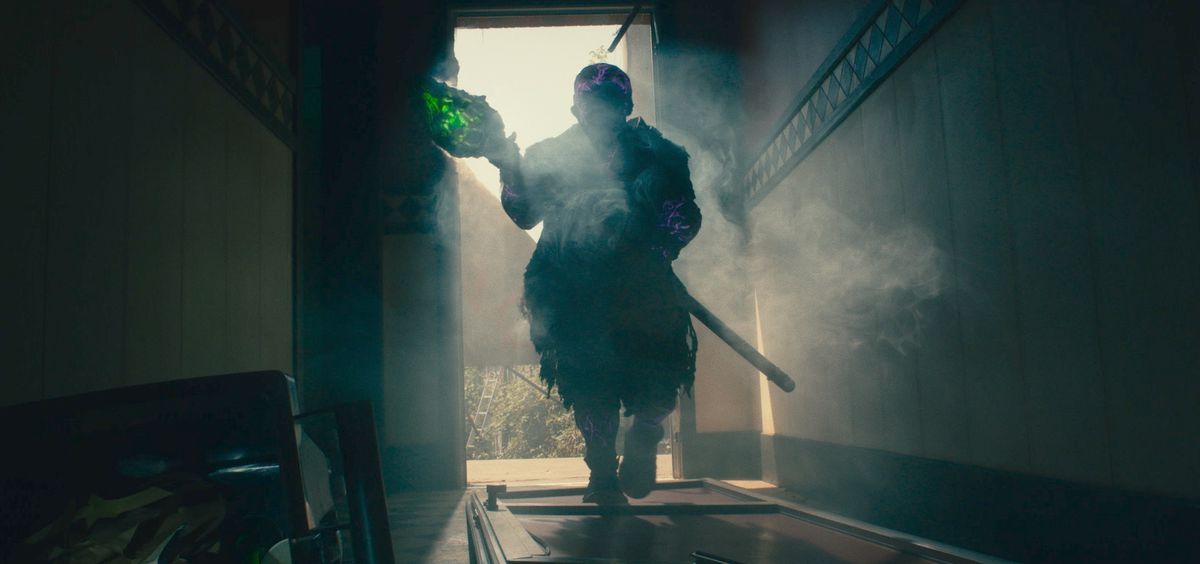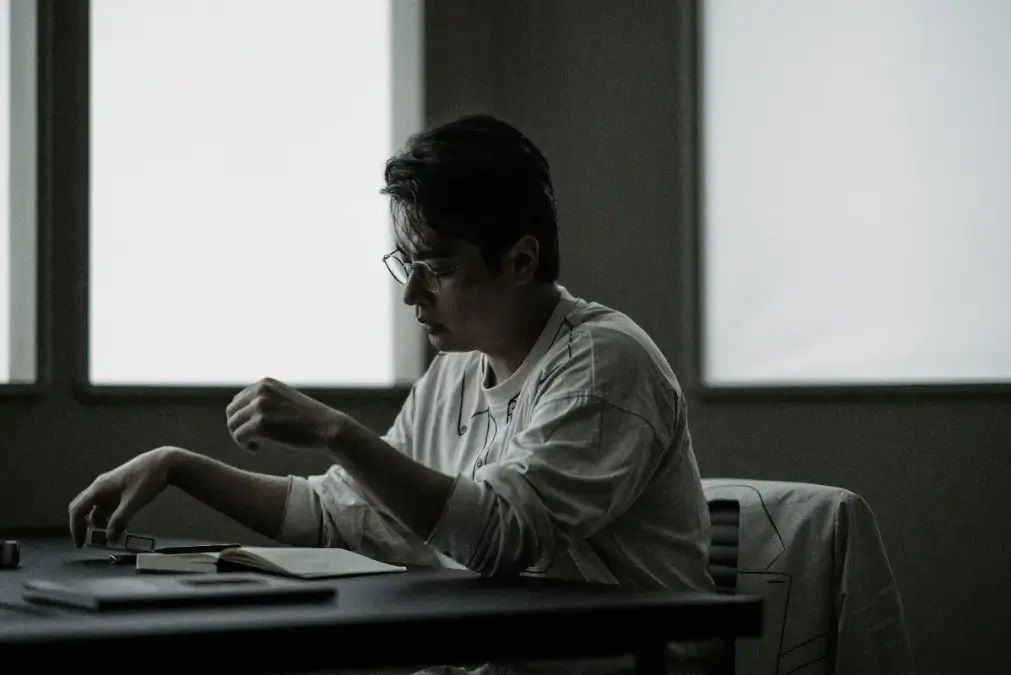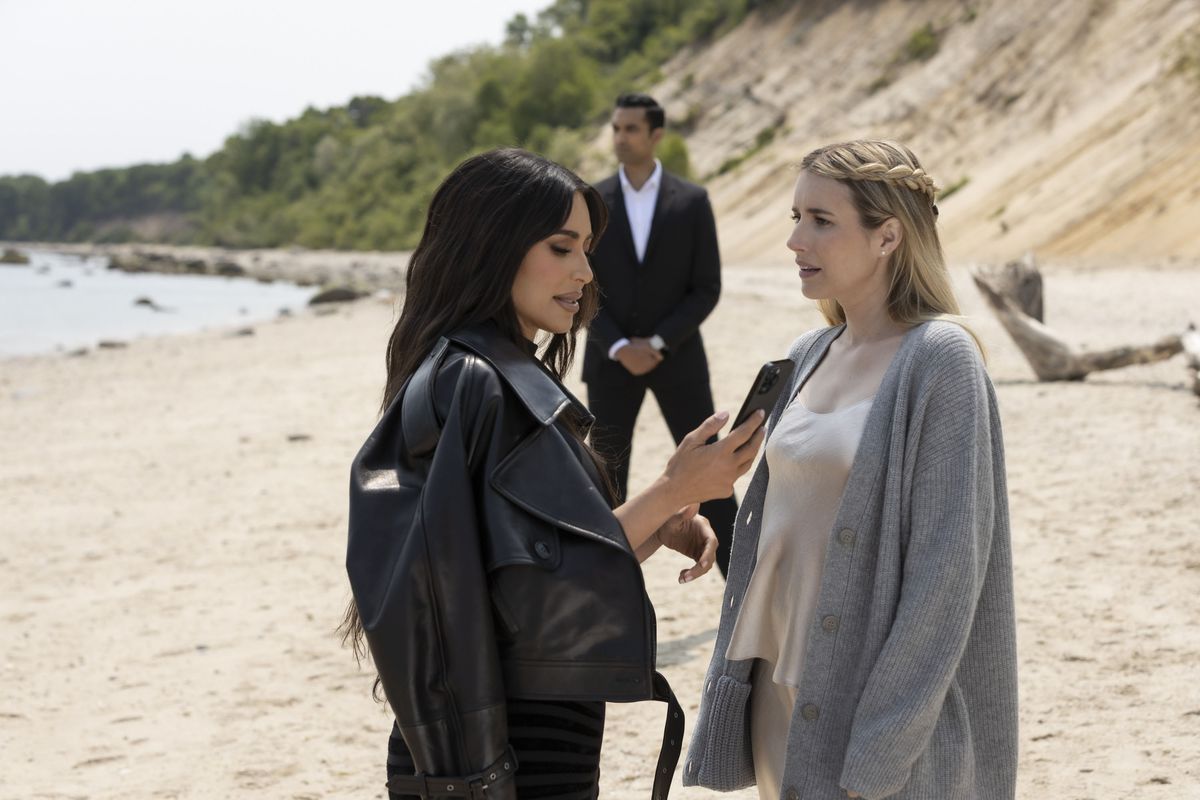It’s an enduring internet joke, and understandably so: Repost that infamously tweeted photo of multiple stars lining up to herald the creation of the Dark Universe, the extended cinematic universe planned to kick off with the release of 2017’s Tom Cruise-led The Mummy and discussed in the press since 2014.
The blueprint appeared simple: Universal’s equivalent of the Marvel or DC movies would integrate its famous Universal Monster characters into a multifilm and presumably multimedia franchise, powered by some of the biggest names in Hollywood. Johnny Depp would play the Invisible Man! Javier Bardem would play Frankenstein’s Monster! Russell Crowe already shot his part as Dr. Jekyll and Mr. Hyde in The Mummy! These stars were photographed (or at least composited) together with Cruise! It was all happening!
And then, of course, it didn’t. Cruise’s Mummy didn’t even make Scorpion King money in North America, and the whole project was scotched. More than half a decade later, the photo is still trotted out as an example of Hollywood hubris. Presumably that official Dark Universe account remains active (and, as such, open to reposts) as a monument, to remind other architects of shared universes that they ought to stay humble, lest they turn into an evergreen joke.
:no_upscale()/cdn.vox-cdn.com/uploads/chorus_asset/file/8645631/mummy_pic.jpg)
At the same time, this year has served as a potent reminder that, in its way, the Dark Universe never really went anywhere. Though the Universal Monsters haven’t ever matched their initial 25-year classic period, where a less tightly linked (but still interrelated) universe produced nearly 50 movies (and at its peak released them at a Marvel-like pace of three or four per year), they’ve been back in action for another quarter-century at this point, equaling the original run in longevity if not total filmed output.
Most of the classic Universal Monsters, along with several new contenders, have been represented on the big screen in the past 25 years, albeit not with the same interconnected, ultra-lucrative glory the studio had its eye on in the wake of Marvel’s success. With two of this year’s entries, Renfield and The Last Voyage of the Demeter, joining their brethren in at-home streaming for spooky season, let’s take another look at that not-so-new world of gods and monsters. There may be more — and better — movies to the Dark Universe than you originally thought.
But first, a quick guide to the movies we are going to run through here, and which are worth your time.
Watch: The Mummy (1999); The Wolfman (2010); The Invisible Man (2020); Bride of Chucky (1998); Seed of Chucky (2004); the Halloween sequel trilogy (2018-2022); Hulk (2003); Riddick (2013); M3GAN (2023)
Consider: The Mummy Returns (2001); Van Helsing (2004); Dracula Untold (2014); The Mummy (2017); Renfield (2023), almost entirely because of Nicolas Cage; The Last Voyage of the Demeter (2023)
Skip: The Mummy: Tomb of the Dragon Emperor (2008)
The First Wave: The Mummy (1999), The Mummy Returns (2001), The Mummy: Tomb of the Dragon Emperor (2008), Van Helsing (2004)
:no_upscale()/cdn.vox-cdn.com/uploads/chorus_asset/file/23230478/79.jpg)
The original Universal Monsters era lasted from 1931 until roughly the mid-1950s, at which time Hammer Films grabbed the monster-horror torch and carried it into the 1970s. In the 1980s, slasher pictures ruled the horror genre, and for much of the 1990s, the biggest slasher franchises languished in late-period sequel hell while the biggest studios largely shied away from horror all together. While Universal did release some titles that communed with their monster-movie past (like the short-lived Tales from the Crypt movies), it was actually Sony that produced big-budget, star-laden features about Dracula, Frankenstein’s Monster, and the Wolfman in the first half of 1990s. (Bram Stoker’s Dracula, Mary Shelley’s Frankenstein, and just plain Wolf make for a neat unofficial trilogy.)
By the end of the decade, Universal was back in the game with The Mummy, which took one of the creakier Universal Monsters features and reimagined it as an Indiana Jones-ish adventure movie with some horror elements. Audiences embraced it, and in classic Hollywood studio fashion, Universal interpreted the lesson here with a heavy dose of myopia: Rather than encouraging the studio to revive more of their monsters, the popularity of The Mummy was turned into a mandate for… more of The Mummy. And they weren’t necessarily wrong: The Mummy Returns was a big hit, too, giving director Stephen Sommers the leeway to make the monster mash of his dreams: Van Helsing, in which the vampire hunter from Dracula becomes a strapping, brusque Hugh Jackman and crosses paths with Dracula, Frankenstein’s Monster, and Mr. Hyde, the wretched alter ego of Dr. Jekyll.
Even more than the first two Mummy movies, Van Helsing is a lot: A lot of screeching banshees, a lot of visual effects, a lot of Eurotrash mincing from Richard Roxburgh as Dracula, a lot of cartoony Transylvanian accent in Kate Beckinsale’s voice. Several more monster movies in this vein might have been exhausting (and plenty of viewers were exhausted by Van Helsing well before its credits rolled), but the Sommers approach to monster horror has its garish charms. That’s never more apparent than when watching The Mummy: Tomb of the Dragon Emperor, in which new director Rob Cohen misses the easy layup of “make another Brendan Fraser-starring Mummy adventure movie.” Replete with the Sommers films’ faults (visual and aural noise, hit-and-miss visual effects, screamy jokes) while discarding some of their best elements (charm, creepy-crawly mummy imagery, Rachel Weisz), Tomb of the Dragon Emperor inadvertently makes a solid case for Sommers as a monster maven. It’s the deadliest dead end in the Dark Universe.
The Origin Decade: The Wolfman (2010), Dracula Untold (2014), The Mummy (2017)
:no_upscale()/cdn.vox-cdn.com/uploads/chorus_asset/file/24953808/film_dracula_untold_1600x900_gallery_2_1.jpg)
It was as if the Universal Monsters were reforming in slow motion — such slow motion, in fact, that each new origin story was essentially a new, doomed attempt to start the franchise over from scratch. Today, these otherwise disparate movies are united by working somewhat better than their reputation suggests.
The best of the lot is Joe Johnston’s The Wolfman. In its misty atmosphere and well-wrought melodrama, The Wolfman is faithful to both the spirit and the style of the older Universal Monster movies — especially in the director’s cut available on Blu-ray, which adds additional details and texture to the movie’s opening (most of the considerable gore, surprisingly, remained intact for the theatrical release). Johnston (Jumanji, The Rocketeer) was a last-minute substitution in the director’s chair, but his pulpy sincerity lends itself well to the material, and concerns about overly digitized wolfman transformation scenes now seem rather quaint, considering how much mileage the movie gets out of old-fashioned production design and 35mm cinematography.
If the revised story goes a little heavy on bog-standard daddy issues, at least the werewolf remains genuinely dangerous amid his anguish, rather than having his story reconfigured as a superhero origin, which is essentially the strategy employed by Dracula Untold. On those terms, tracing the journey taken by Vlad the Impaler (Luke Evans) on his way to vampiric immortality, Untold is a decent piece of hokum, reflecting the popularity of the Screen Gems vampire/werewolf series Underworld as much as the enduring appeal of the Universal Monsters.
But Dracula Untold, while a minor hit, was plainly greenlit before Universal had a vision of major stars embodying these famous roles. (No offense to Luke Evans, who is fine in the movie.) Reflecting the wateriness beneath the confidence of major slate announcements, the studio nonetheless hedged on whether or not this Dracula would be part of its Dark Universe, with a post-credits scene seemingly designed to bring the character into the present day should a franchise require it. In the meantime, the studio would go big with The Mummy, hiring Tom Cruise to bring movie-star flair to the franchise.
The more analogous monster for the movie is Frankenstein’s, given how 2017’s The Mummy feels stitched together from spare parts of the Cruise filmography, the Brendan Fraser-era Mummy trilogy, and actual horror lore. As it happens, the not-inconsiderable horror stuff in this Mummy is actually pretty cool, particularly Sofia Boutella as Ahmanet, the spurned Egyptian princess awakened to wreak havoc in the present day, collecting zombified minions as she goes. The problem is Cruise, miscast as an undead semi-mercenary who may be under Ahmanet’s thrall; his character goes through what is eventually a workable tragic-hero Universal Monster arc, but Cruise acts more discombobulated than truly conflicted. Instead of generating productive tension between Cruise’s coiled image and the chaos of the unknown, The Mummy feels at odds with itself. Crowe’s Dr. Jekyll appears mid-movie to welcome Cruise’s character to a “new world of gods and monsters,” and in a way, the film culminates Universal’s 2010s-era monster movies by accidentally raising a pointed question: Do you want to make gods (in Hollywood terms, all-ages blockbusters) or monsters?
Fresh Starts: The Invisible Man (2020), Renfield (2023), The Last Voyage of the Demeter (2023)
:no_upscale()/cdn.vox-cdn.com/uploads/chorus_asset/file/19355569/2527_t1f_0001.jpg)
After The Mummy disappointed in 2017, Universal didn’t seem to have much of a choice; as Dr. Frankenstein knows, assembling a monster may be tricky, but it’s not as difficult as attempting to play god. So, freed of official Dark Universe obligations, the studio tried a different tack: Just make some monster movies that work, maybe with an up-and-coming auteur. As it happens, the more hands-off approach nailed it in one with Leigh Whannell’s The Invisible Man, a movie that takes certain key tenets of the original (namely, a master of invisibility who is already power-lusting bad news when the movie starts) and spins them into a new, impeccably made shocker, anchored by a terrific Elisabeth Moss. That movie’s 2020 success seemed to embolden Universal to keep their monsters standing alone: Don’t connect them, don’t reconcile them, don’t even necessarily make sure that you aren’t putting out two Dracula movies in the space of four months.
This year’s Renfield and The Last Voyage of the Demeter are arguably complementary; one is a comic take on Dracula, with Nicolas Cage giving a terrific performance in Oscar-worthy makeup amid an otherwise sweaty, cutesy affair, while the other is a Hammer-indebted mood piece with a feral, animalistic version of Drac. Less happily, neither movie is fully satisfying, though Demeter succeeds on more of its own terms. While it might be preferable to see one terrific Dracula movie rather than two mixed bags, it’s oddly heartening to see Universal embracing its monster heritage enough to release two very different Dracula movies in such close succession, rather than putting out one per decade.
Meanwhile, the more fully auteur-driven post-Dark Universe hasn’t yet come to pass, with Renfield and Demeter feeling more like specialty items than filmmaking events, while a Ryan Gosling-led Wolf Man and Karyn Kusama-directed Dracula have yet to materialize. But at least the studio seems to have embraced the versatility of its horror roots.
Side Monsters: Hulk (2003), Riddick (2013), M3GAN (2023)
:no_upscale()/cdn.vox-cdn.com/uploads/chorus_asset/file/24540450/maxresdefault.jpg)
The newest official Universal Monster is the Creature from the Black Lagoon, who debuted in 1954, and remains the only one to not receive some kind of remake or revival in the past 25 years. Reaching further back, Dr. Jekyll and Mr. Hyde appeared in a 1913 (!) feature, released by a company that eventually became part of Universal, and the studio has attempted to bring the character(s) into the Dark Universe via both Van Helsing and the 2017 Mummy.
Jekyll/Hyde and the Creature make sense as additions because they both fulfill the qualifications of what separates Universal Monsters from supernatural slashers or all-out creature features: characters who are both humanoid and potentially monstrous. As it happens, there are a number of Universal-distributed movies featuring characters that match this description and could be described as part of an expanded Dark Universe. Ang Lee’s Hulk, orphaned by the Marvel Universe, pre-reverses the Dracula Untold formula; it’s more monster movie than superhero saga. It’s also very much in the tradition of the better 1930s and 1940s films, where a kind of horrible beauty exists alongside the horrific nature of the on-screen beast. Rather than gorgeous production design or moody cinematography, Hulk has its balletic leaps across a bright blue sky, often depicted in screen-splitting comics panels. It’s fitting that this version of the character doesn’t fight notable comics villains, but rather monstrous variations on himself, from Hulk Dogs to a mess of Nick Nolte-shaped electricity.
Vin Diesel’s Richard B. Riddick isn’t as sharply divided as Bruce Banner and the Hulk; his human and monstrous qualities coexist more comfortably, and did so in both the creature feature Pitch Black and the sci-fi epic Chronicles of Riddick. But for Riddick, a back-to-basics sorta-rehash of Pitch Black, the duality feels more pronounced as he struggles to survive on a hostile planet… then stalks and kills a number of mercenaries who he lures there in order to get himself a ship. And this year’s M3GAN is more Frankenstein’s Monster than Jekyll, Hyde, or lagoon-dwelling Creature, but she certainly rides the uncanny line between tenacious monster and wounded human ego.
The Slasher Factor: Bride of Chucky (1998), Seed of Chucky (2004), Halloween (2018), Halloween Kills (2021), Halloween Ends (2022)
:no_upscale()/cdn.vox-cdn.com/uploads/chorus_asset/file/24083924/10_5_bride_of_chucky__1_.jpg)
Perhaps inspired by their popularity at various incarnations of Universal Studios’ Halloween Horror Nights, some slasher-era characters that began under other copyrights have made their way under the Universal umbrella. Chucky, as I’ve previously argued, is really more of a Universal Monster than a slasher at this point, and the studio’s first shot at a Child’s Play movie, 1998’s Bride of Chucky, makes it especially clear he should be the first new entry in that pantheon since the Creature in 1954.
Perhaps more controversially, the version of Michael Myers portrayed in David Gordon Green’s Halloween sequel trilogy brings him closer to Universal Monster status. Though of course there are supernatural aspects to the Universal Monsters, past Halloween sequels had dabbled in the supernatural mostly as a way of explaining Myers’ return and making him essentially invincible. Green’s movies mix shades of these aspects with greater attention to Myers’ unknowable yet lurking personhood underneath the chilling, silent shape of a serial killer. He’s still more outright evil than the instinctive Wolf Man, pitiable Frankenstein’s Monster, or horny Dracula, yet by Halloween Ends, Green’s version of Myers has more in common with these figures (angry mobs of townsfolk, a decayed hideaway not unlike the castle ruins of Frankenstein Meets the Wolf Man, a drive to kill that appears more instinctive than vengeful) than straightforward slashers like Freddy or Jason.
The Dark Universe cannot be killed
:no_upscale()/cdn.vox-cdn.com/uploads/chorus_asset/file/22680472/halloween_kills_michael_myers.jpg)
Of course, Michael Myers seems unlikely to meet the Wolf Man anytime soon, and neither Chucky nor Tiffany is going to double date with Frankenstein’s various monsters. Those kinds of crossovers were the Universal Monsters’ bread and butter for a few years well after the series hit a creative peak, and while new versions may eventually materialize, trying to build an entire franchise around that promise was a clear mistake.
Planning a Dark Universe is antithetical to the mysteries of these creatures; they’re supposed to endure against logic and every law of nature, not because of a carefully vetted corporate blueprint. In 1999, there was no plan to unleash four mummies, four different Draculas, one vicious Invisible Man, and half a dozen accidental candidates for the monster hall of fame; monsters are notoriously difficult to control, their lore more shadowy and mysterious than the average superhero. Many of the best monster movies examine the line between humanity and something else entirely. It’s no wonder the Dark Universe has secretly flourished so close to death.






